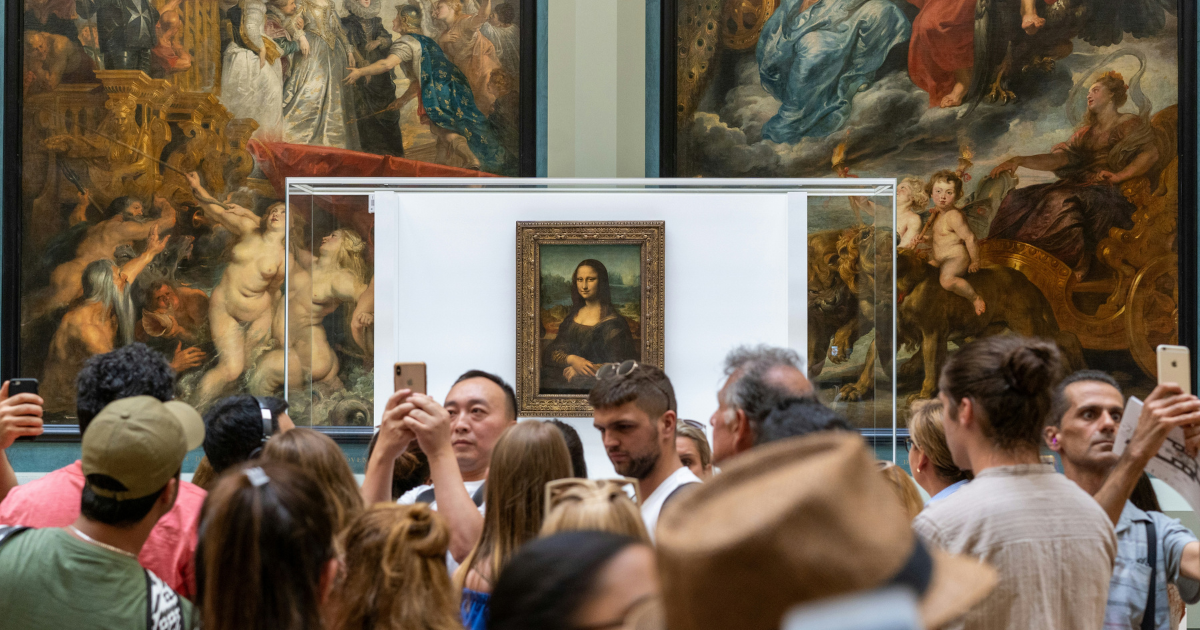Stolen masterpieces
Crimes that became part of cultural heritage

Where is the famous painting "Mona Lisa"? If you look closely at a video dedicated to the Paris Olympics, you might notice that in one frame, the camera pans across the section of the Louvre where Leonardo da Vinci's "Mona Lisa" should be displayed. But it’s not there. While the reasons and motives for such a decision are open to debate, history holds a moment when the “La Gioconda” did, in fact, disappear.
This episode is just one part of a larger narrative where masterpieces have fallen into the wrong hands, becoming objects of crimes and passions. Let’s revisit some of the most notable cases where iconic works of art disappeared and how they were eventually returned to the world. These stories are not only about theft but also about how art continues to connect people, even in times of loss.
Leonardo da Vinci, "Mona Lisa"
In 1911, Paris woke up to a shocking revelation: the "Mona Lisa" was gone. What began as a quiet morning at the Louvre quickly turned into chaos when it was discovered that Leonardo da Vinci’s masterpiece had vanished. The painting, a personal favorite of the artist, disappeared as mysteriously as the smile of Gioconda, the woman it depicts.
The culprit was Vincenzo Peruggia, a Louvre employee who intended to return the painting to its "rightful home" in Italy. However, his patriotism was entangled with greed, as he also aimed to sell the masterpiece to antique dealers. Peruggia spent the night hiding in a museum closet. Early the next morning, when the halls were empty, he removed the painting from its frame, concealed it under his work smock, and exited through a service door. For two years, the "Mona Lisa" remained missing.
The incident sparked worldwide attention. The empty frame became a symbol of loss and ignited a public fascination with the painting, which had previously gone relatively unnoticed. When the masterpiece was recovered from an Italian gallery, it returned to the Louvre to a hero’s welcome, forever elevating its status to that of an icon. Today, millions of visitors come to Paris not just to see the "Mona Lisa," but to feel the weight of its extraordinary story.
Edvard Munch, "The Scream "
Edvard Munch once said, "The Scream is the embodiment of my soul." This masterpiece, steeped in anguish, became a universal symbol of human suffering. But for thieves, it was merely a means to an end.
The first theft occurred in 1994. On the day of the Lillehammer Olympics opening, criminals exploited the distraction and stole the painting from Oslo’s National Gallery. Their method was shockingly simple: they used a ladder to climb through a window and left a mocking note in place of the masterpiece: "Thanks for the poor security."
Three months later, Norwegian police, working with British detectives, orchestrated a sting operation. An undercover agent posed as a buyer and negotiated with the thieves, eventually recovering the painting for $250,000.
The second theft in 2004 was far more dramatic. Armed robbers stormed the Munch Museum, ripping "The Scream" and "Madonna" from the walls in broad daylight, leaving the public aghast. The paintings were recovered two years later, but "The Scream" bore severe damage. Restorers described its scars as permanent, a poignant reminder of its ordeal. Ironically, the physical damage only heightened its symbolic significance.
Michelangelo Merisi da Caravaggio, "Nativity with Saint Francis and Saint Lawrence"
Caravaggio’s "Nativity with Saint Francis and Saint Lawrence" was a luminous masterpiece, exuding divine grace despite its dark tones. Created for a church in Palermo, the painting seemed to radiate light.
In 1969, this light was extinguished when the painting was stolen. Suspicions immediately turned to the Sicilian mafia. Tales of the artwork’s fate vary: some claim it was used as a floor mat in a hideout, while others believe it was burned. In the 1990s, a former mafia member alleged that the painting was destroyed to avoid incrimination. Its fate remains a mystery.
What does this loss signify? It’s more than the disappearance of a painting; it’s the erasure of a piece of Sicily’s cultural identity. Caravaggio’s "Nativity" remains a symbol of art’s struggle against the shadow of crime. Art historians hold onto hope that this masterpiece will one day re-emerge, illuminating the world once more.
The art that unites us
These stories are not just chronicles of crimes but lessons in the value of art. They remind us that paintings are more than just pigment on canvas, they hold our stories, emotions, and memories. Perhaps their greatest strength lies in their ability to remain with us, even in their absence.
So, the next time you stand before a masterpiece, look a little closer. Behind every line and brushstroke lies a tale worth preserving.


